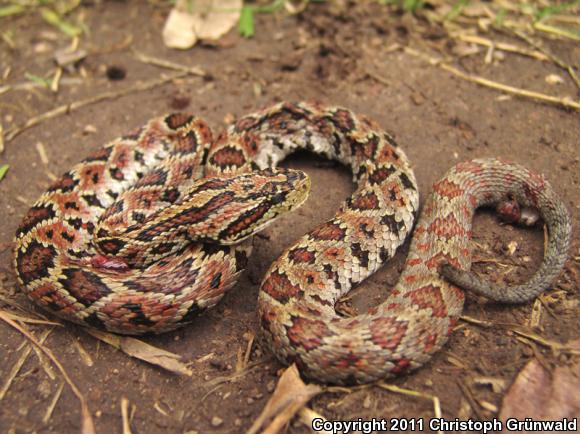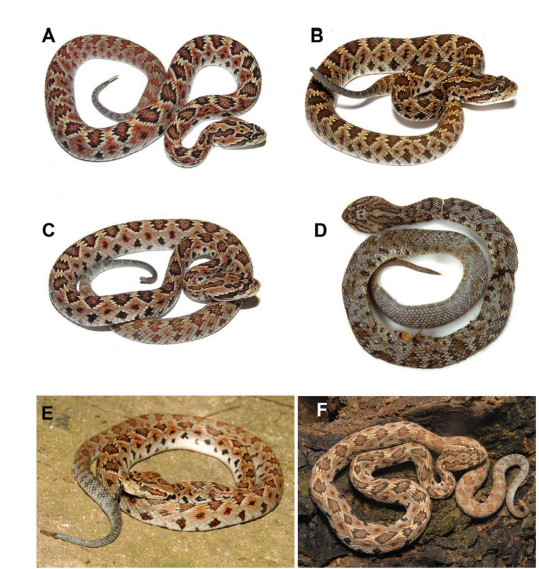Post by Ceratodromeus on Jan 25, 2016 3:13:42 GMT 5

Scientific classification
Kingdom: Animalia
Phylum: Chordata
Subphylum: Vertebrata
Class: Reptilia
Order:Squamata
Suborder: Serpentes
Family: Viperidae
Subfamily: Crotalinae
Genus: Crotalus
Species: C. lannomi
Description
This is a typical crotaline rattlesnake in body morphology, but with a distinct body coloration. In life, they have a background tan coloration, with hues of orange intermittently placed amongst the dorsal patterning. This patterning can be likened to that of the diamondback, running from the nape of the neck to the tip of the tail just before the rattle. The head is triangular in shape -- a trademark of the crotaline snakes. This is due to the large venom glands on either side of the head. Below each eye is a light to dark colored stripe; On the dorsal side of the head, near the nape of the neck, two large stripelike blotches run from around the middle of the head to the nape. The holotype animal, described in Tanner(1966){1}, measured 569mm(22.4in) in snout-ventral length, with a tail length of 69mm(2.7in) and upon the species' rediscovery in 2008{2}, additional specimens were collected and measured. These animals, three males and two females(UTADC-4004, UTADC-4002, UTADC-4006, UTADC-4003, and UTADC-4005 respectively) ranged from 300-612mm(11.8-24in) in snout-vent length, and tail lengths ranging 28-71mm(1.1-2.79in).

Geographic range
The holotype animal is known from Jaliso, Mexico; when the species was rediscovered, it was found in the tropical foothills of Colima{1,2}.

Dietary habits
A juvenile animal(UTADC 4003) contained lizard scales(likely Sceloporus), arthropod remains, plant matter(secondarily ingested), and remnants of a colubrid mandible{2}. No ecological studies have been performed on this species, but it is likely that juvenile animals have similar dietary habits to other Crotalus snakes of this size -- with juvenile animals feeding primarily on small lizards, amphibians, or arthropods, and adults feeding predominantly on small to mid sized mammals and birds{3}.
References
{1} Tanner, Wilmer W. "A new rattlesnake from western Mexico." Herpetologica (1966): 298-302.
{2} Reyes-Velasco, J. A. C. O. B. O., et al. "Rediscovery of the rare Autlán long-tailed rattlesnake, Crotalus lannomi." Herpetological Review 41.1 (2010): 19.
{3} Klauber, Lawrence Monroe. Rattlesnakes: Their Habits, Life Histories, and Influence on Mankind, (Volume 1).


